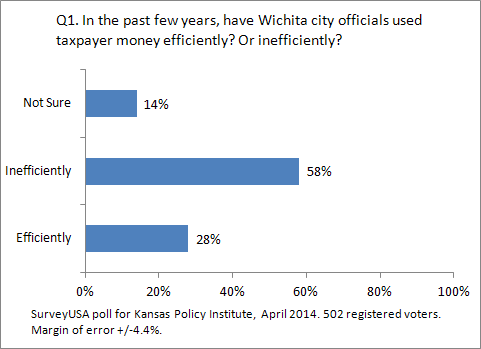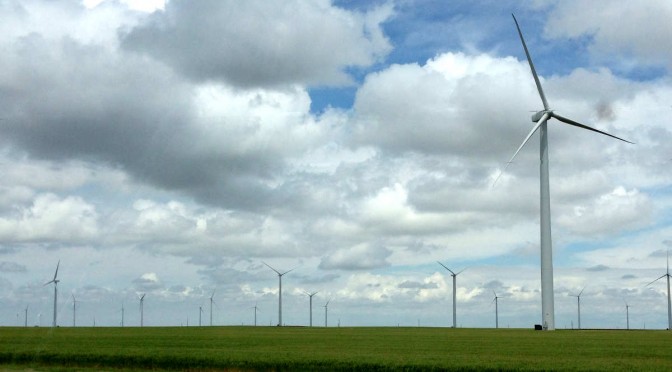Tag: Kansas Policy Institute
-

Examining Wichita’s water future
On Thursday 17 July, come hear from the City of Wichita and others on the scope of the problems, possible solutions, and the perspectives of several experts in the debate over Wichita’s water future.
-

To fund government, Wichitans prefer alternatives to raising taxes
Wichita voters told pollsters they prefer adjusting spending, becoming more efficient, using public-private partnerships, and privatization to raising taxes.
-

Wichita voter opinion on city spending and taxation
Wichita voters give their opinions on city spending, subsidies for economic development, and their willingness to pay higher taxes for certain services.
-

Kansas City Star’s dishonest portrayal of renewable energy mandate
The Star touts economic gains to the wind industry but ignores the reality that those gains come at the expense of everyone else in the form of higher taxes, higher electricity prices and other unseen economic consequences, writes Dave Trabert of Kansas Policy Institute.
-

Wichita per capita income not moving in a good direction
Despite its problematic nature, per capita income in Wichita is used as a benchmark for the economy. It’s not moving in the right direction. As Wichita plans its future, leaders need to recognize and understand its recent history.
-

WichitaLiberty.TV: Alternatives to raising taxes, how to become involved in politics, and bad behavior by elected officials
Wichita voters tell pollsters that they prefer alternatives to raising taxes. Then, how can you get involved in politics? A deadline is approaching soon. Finally, some examples of why we need to elect better people to office.
-

To fund government, Wichitans prefer alternatives to raising taxes
Wichita voters prefer adjusting spending, becoming more efficient, using public-private partnerships, and privatization to raising taxes.
-
Debunking CBPP on tax reform and school funding — Part 4
States that spend less, tax less — and grow more, writes Dave Trabert of Kansas Policy Institute.
-
Myth: The Kansas tax cuts haven’t boosted its economy
While tax reform hasn’t produced the “shot of adrenaline” predicted by Governor Brownback, the problem is one of political enthusiasm rather than economics, writes Dave Trabert of Kansas Policy Institute.